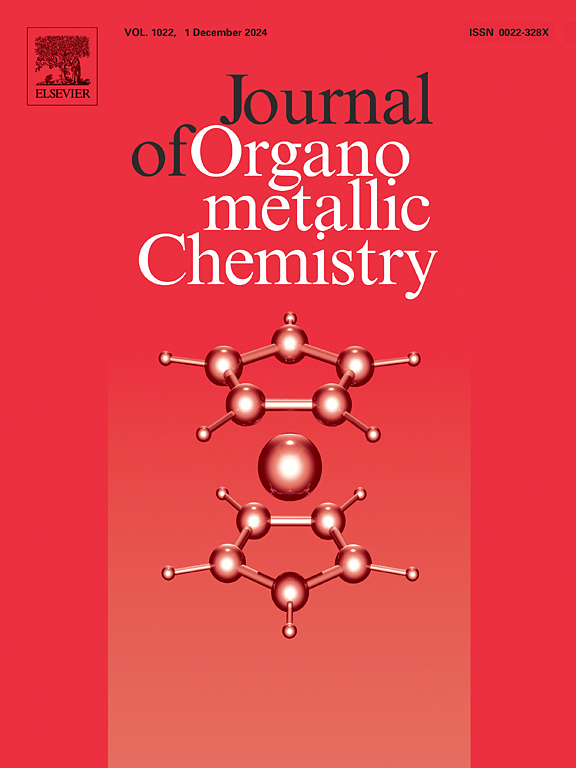Sequential phase transfer catalysis–hydrosilylation as an efficient method for the synthesis of polyfluorinated triethoxysilanes
IF 2.1
3区 化学
Q3 CHEMISTRY, INORGANIC & NUCLEAR
引用次数: 0
Abstract
An efficient approach to obtain of polyfluorinated triethoxysilanes H(CF2)nCH2O(CH2)3Si(OEt)3 with high yields, is presented using a sequential reactions of phase transfer catalysis and hydrosilylation. Tetrabutylammonium bromide and Speier's catalyst (200 ppm) were used as catalysts. The hydrosilylation reaction proceeds rather quickly within 1–3 h under mild conditions at room temperature. 1H NMR monitoring indicates a selective process with the formation of only the main γ-addition product. The individuality of the synthesized triethoxy(polyfluoroalkoxy)propyl silanes have been confirmed by FTIR, 1H, 13C, 19F, and 29Si NMR spectroscopy and elemental analysis. Quantum chemical calculations have shown that with a decrease in the number of electronegative fragments CF2 in the molecule, an increase in the energetic favorability of the hydrosilylation reaction is observed. The prospects for using the obtained fluorosilanes in polymer systems are discussed.

序贯相转移催化-硅氢化反应是合成多氟化三乙氧基硅烷的有效方法
提出了采用相转移催化和硅氢化反应制备高收率多氟化三乙氧基硅烷H(CF2)nCH2O(CH2)3Si(OEt)3的有效方法。采用四丁基溴化铵和Speier催化剂(200ppm)作为催化剂。在温和的室温条件下,硅氢化反应在1-3小时内进行得相当快。1H NMR监测表明,这是一个选择性的过程,只生成主要的γ-加成产物。合成的三乙氧基(多氟烷氧基)丙基硅烷的特性通过FTIR、1H、13C、19F和29Si核磁共振光谱和元素分析得到证实。量子化学计算表明,随着分子中电负性CF2片段数量的减少,观察到硅氢化反应的能量有利性增加。讨论了所得氟硅烷在聚合物体系中的应用前景。
本文章由计算机程序翻译,如有差异,请以英文原文为准。
求助全文
约1分钟内获得全文
求助全文
来源期刊

Journal of Organometallic Chemistry
化学-无机化学与核化学
CiteScore
4.40
自引率
8.70%
发文量
221
审稿时长
36 days
期刊介绍:
The Journal of Organometallic Chemistry targets original papers dealing with theoretical aspects, structural chemistry, synthesis, physical and chemical properties (including reaction mechanisms), and practical applications of organometallic compounds.
Organometallic compounds are defined as compounds that contain metal - carbon bonds. The term metal includes all alkali and alkaline earth metals, all transition metals and the lanthanides and actinides in the Periodic Table. Metalloids including the elements in Group 13 and the heavier members of the Groups 14 - 16 are also included. The term chemistry includes syntheses, characterizations and reaction chemistry of all such compounds. Research reports based on use of organometallic complexes in bioorganometallic chemistry, medicine, material sciences, homogeneous catalysis and energy conversion are also welcome.
The scope of the journal has been enlarged to encompass important research on organometallic complexes in bioorganometallic chemistry and material sciences, and of heavier main group elements in organometallic chemistry. The journal also publishes review articles, short communications and notes.
 求助内容:
求助内容: 应助结果提醒方式:
应助结果提醒方式:


